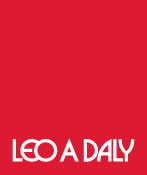Recent Articles
Video: Josh Theodore | designing hospitals with heart
Josh Theodore, AIA, LEO A DALY’s global health practice leader, believes that design should touch the body, mind and spirit. In this short video, he discusses his approach to design, and how technology and patient-centered care are transforming healthcare.
Transcript of video:
One of the most exciting things that happened to me all the way back in high school was going on a mission trip down to the Yucatan Peninsula. Part of it was working on a clinic, and getting the opportunity to see how that clinic that they’d never had was going to improve the lives of families and the people living in the peninsulas. That really excited me.
What motivates you as a designer?
Servicing the mind, the spirit and the body when you’re working with clients and patients. That’s really important and challenging part of what healthcare architecture is. Not just the building, but it’s how that environment transcends the client, the patient, the staff, and the environment that they’re working in.
How do you approach design?
Orchestrating an environment is important, and you do that through design. From the smallest piece of where the outlets are in the room, to the big picture of what it looks like, to how we incorporate evidence-based design elements, we always want to lead the client forward in a way that they know they can continue their mission, and as healthcare evolves and changes, they’re able to then adjust.
How does design improve the patient experience?
As clients have shifted to patient-centered and family-centered care, we’ve seen the hospitality aspects in healthcare design increase tremendously. It helps reduce their anxiety, it makes them comfortable in that setting, and that’s one of the aspects of design that’s very, very critical.
An MRI tube can be a scary place for some people. When my daughter had an MRI, we made almost a game out of it. That comes down to the design being conducive to them being able to focus on the words you’re saying, and what the care team is trying to provide them, because they’re not distracted by all the buzz going on around them.
What is exciting about the future of healthcare design?
I think innovation in technology is really the biggest thing we’re seeing in healthcare now, and the move of healthcare outside of the hospital, outside of the clinic, into the home, into your wearable, and how we incorporate a lot of this into design to make the buildings more efficient is one of the best things that we can do.
The least expensive place to treat a patient is in their community, and in their home. We’re looking to help systems reduce the cost of care. We’re looking to help the country reduce the cost of healthcare. And part of doing that is getting out into the communities with a different type of facility than we’ve ever done before.
How important is it to have a great team?
I think design is really all about the team. It’s phenomenal how many team members you need to have a successful healthcare project because they’re so complex. All of it comes down to collaboration, and really understanding what your colleagues have in mind, what have they experienced in the past, how can you help foster that, and what can you learn from them.
I think we’re all in this business to improve the world, to improve ourselves, and you can only do that, really, by consistently reaching out to others.
What is the best part of being a healthcare designer?
I think to me the most gratifying thing on any project is knowing that a client was happy and satisfied. That they have a building that functions for them, that the community is proud of, and the hospital system is proud of. Those are the moments for me that are satisfying.
 About the author
About the author
The least expensive place to treat a patient is in their community, and in their home. We’re looking to help systems reduce the cost of care. We’re looking to help the country reduce the cost of healthcare. And part of doing that is getting out into the communities with a different type of facility than we’ve ever done before.
